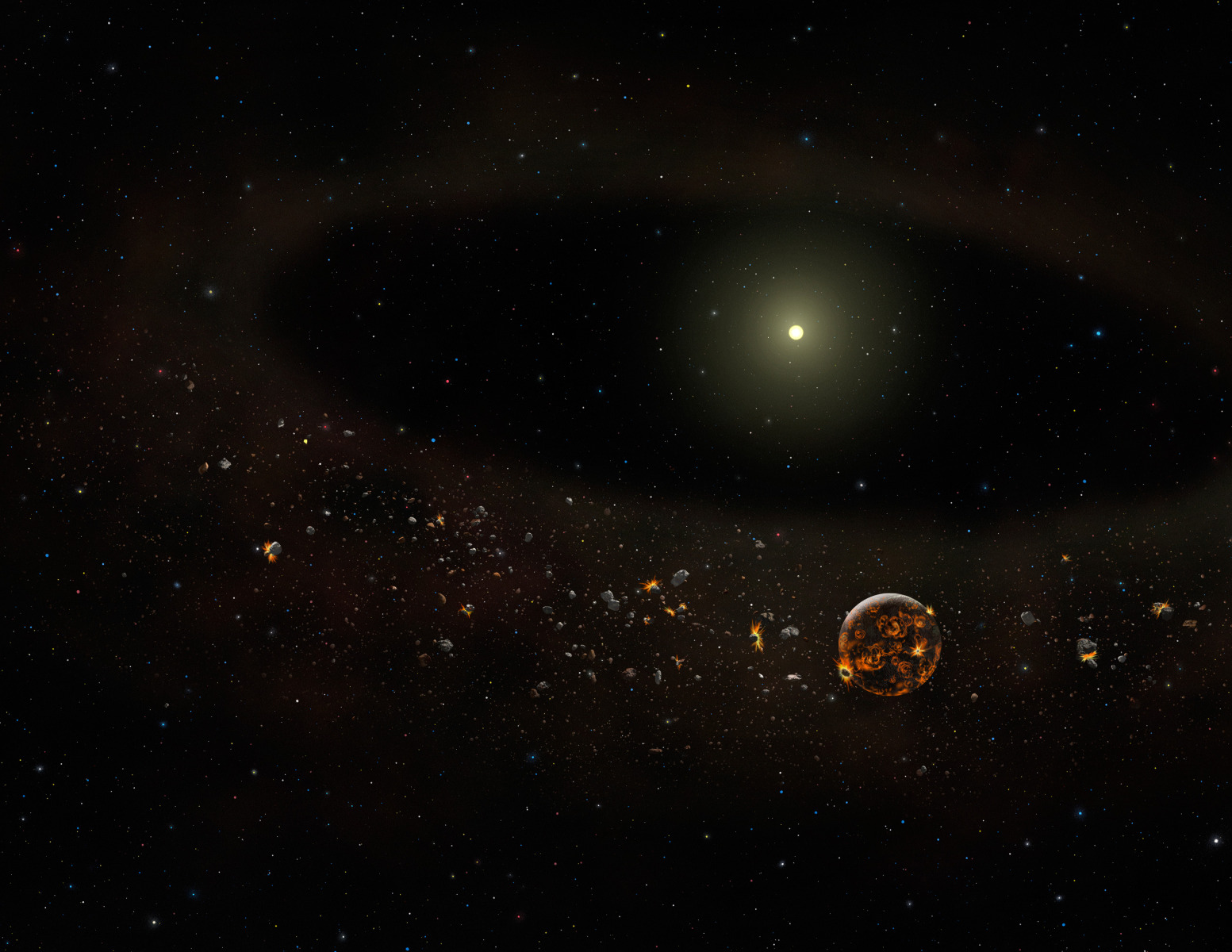A huge, hot dusty disc around a Sun-like star seems to have vanished before our very eyes, and its disappearance cannot be explained by any current scientific theory.
The star TYC 8241 2652 1 has been observed by a number of telescopes, and a bright infra-red glow indicated the presence of a large amount of warm dust absorbing visible light from the star and re-emitting it in the infra-red range.
Carl Melis and colleagues at the University of California, San Diego report in Nature that this dust seemed to be the result of collisions of rocky objects and fell in the region analogous to where rocky planets formed in our solar system. Estimation of the size of dust grains hinted that this could be a system undergoing an active stage of terrestrial planet formation. This made it an ideal candidate for future observation; as calculation of likely grain size suggested our theories of planetary formation suggest that rocky planets like the Earth will eventually form from these discs of dust and ice.
However, since 2008, the infra-red emission from this star has reduced by a factor of about 30, suggesting that the star is now only host to a meagre amount of far cooler dust. This is an unprecedented observation, changes like this have never been seen or even predicted before, so what could have caused it?
 No major changes have occurred in the star in this time, so it's unlikely that a violent stellar event blew the dust away. Models of planet formation predict the loss of dust over at least many thousands of years, as the gravitational field of newly formed planets disturb the dust cloud.
No major changes have occurred in the star in this time, so it's unlikely that a violent stellar event blew the dust away. Models of planet formation predict the loss of dust over at least many thousands of years, as the gravitational field of newly formed planets disturb the dust cloud.
Melis argues that only two hypotheses could fit the results. They are:
- The collisional avalanche hypothesis, where dust grains become gradually smaller through collisions, until they're below a certain threshold and are blown out of the system by radiation pressure from the star.
- Runaway accretion, where gas in the cloud places aerodynamic drag on the dust, causing it to fall in to the star.
However both ideas have problems, so the jury is still out.
Even though we lack a clear explanation for what has happened in this system, it is a unique observation and certain to push our understanding of how planets like the Earth first form.










Comments
Add a comment